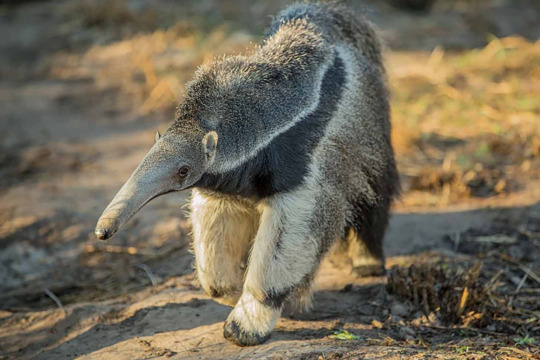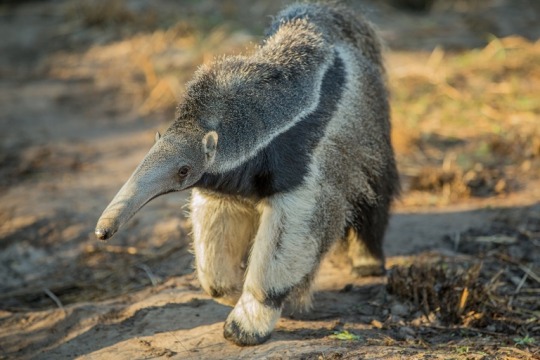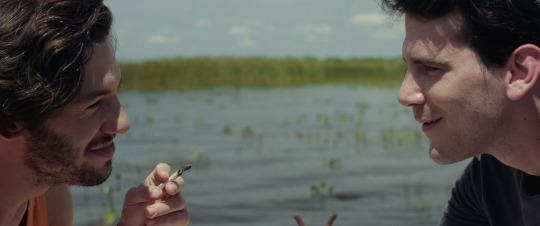#iberá
Explore tagged Tumblr posts
Text

#IFTTT#Flickr#park#wild#macro#nature#argentina#animal#canon#mammal#wildlife#id#bat#national#unknown#need#species#corrientes#naturephotography#iberá#2020#wildlifephotography#5diii#jonodashper#jonathondashper#iberánationalpark
93 notes
·
View notes
Text
Muchas de las cosas que aprendí en ecología (ecología de islas por ejemplo) fueron descubiertas o digamos ideadas por científicos estadounidenses e ingleses. Y hay ciertas ideas inherentes ahí, como el concepto de que las islas están totalmente aisladas y son tubos de ensayo para la ecología, pensamiento que se utilizó, y no estoy exagerando con esto literalmente fue así, en las pruebas de bombas nucleares en las colonias de EEUU en el Pacífico.
Así que no me sorprende si vuelvo a revisar mis apuntes de ecología y me encuentro con algún inglés que habla de domesticar Inglaterra secando humedales y talando bosques.
#cosas mias#acá querían hacer eso con Iberá#lo consideraban un obstáculo al progreso y proponían secarlo y hacerlo pasto ganadero
24 notes
·
View notes
Text
First recorded Giant Anteater twins spotted in Argentina (Re:wild)


Excerpt from this Re:wild story:
Giant Anteater pups are known to ride on their mother’s backs for up to a year as they learn the skills to survive. Conservationists regularly record new births, but twins are extremely rare and have never been recorded…until now.
These pups are helping to rewild Iberá National Park into a healthy and thriving ecosystem. Re:wild partners Rewilding Argentina and Tompkins Conservationbegan reintroducing Giant Anteaters over 15 years ago. There are now five established populations throughout this vast wetland.
44 notes
·
View notes
Text
you ever browse an ecologist's photo blog and get very intensely jealous because this guy is doing all the things you want to do
#talking about explorations of an ecologist run by josh vandermeulen#he went birding in the iberá wetlands and mentioned at one point he saw around 90 different bird species#and he does late night mothing surveys....#text
1 note
·
View note
Text
EL CHIPÁ PARA EL MUNDO: UNA COCINERA CORRENTINA GANÓ UNO DE LOS PREMIOS DE COCINA MÁS IMPORTANTES
Gisela Medina obtuvo la primera mención del concurso del Basque Culinary Center. Cómo la Red de Cocineros del Iberá logró poner en valor la tradición de la gastronomía local. ADRIANASANTAGATI “Lo viví como la final del Mundial”. Gisela Medina (44) no es futbolista, sino cocinera. Pero esta semana, sí, llegó a la final de su Mundial: fue la primera argentina en ser reconocida por el Basque…

View On WordPress
#Basque Culinary Center#Cocineros del Iberá.#Concurso#Gisela Medina#Parque Nacional Iberá#Provincia de Corrientes
0 notes
Text

"Pokemones legendarios por Argentina"
Corrientes: Thundurus en los Esteros del Iberá
0 notes
Text
— Recent giant anteater sightings in Rio Grande do Sul state indicate the species has returned to southern Brazil, where it had been considered extinct for more than a century.
— Experts concluded that the giant anteater ventured across the border from the Iberá Park in northeastern Argentina where a rewilding project has released around 110 individuals back into the habitat.
— The sightings emphasize the importance of rewilding projects, both to restore animal populations in specific regions and help ecosystems farther afield.
— Organizations across Brazil are working to protect and maintain current giant anteater populations, including rallying for safer highways to prevent wildlife-vehicle collisions that cause local extinctions.
Playing back hours of footage from a camera trap set in Espinilho State Park in the south of Brazil in August 2023, Fábio Mazim and his team banked on possible sightings of the maned wolf or the Pantanal deer and had their fingers crossed for a glimpse of a Pampas cat (Leopardus pajeros), one of the most threatened felines in the world.
What they didn’t expect to see was an animal long presumed extinct in the region. To their surprise, the unmistakable long snout and bushy tail of a giant anteater ambled into shot.
"We shouted and cried when we saw it,” the ecologist from the nonprofit Pró-Carnívoros Institute told Mongabay. “It took a few days to grasp the importance of this record. A sighting of a giant anteater was never, ever expected.”
Last seen alive in the southwest of the Rio Grande do Sul state in 1890, the giant anteater (Myrmecophaga tridactyla) has since been spotted 11 times since August 2023, although the scientists are unsure whether it’s the same one or different individuals. However, the sightings confirm one clear fact: The giant anteater is back.
It's a huge win for the environment. Giant anteaters play an important role in their ecosystems, helping to control insect numbers, create watering holes through digging and are prey for big cats such as jaguars and pumas.
The habitat of the giant anteater stretches from Central America toward the south cone of Latin America.
Its conservation status is “vulnerable,” although it is considered extinct in several countries, including El Salvador, Guatemala and Uruguay, as well as specific regions such as the states of Rio de Janeiro, Espirito Santo, Santa Catarina and (until now) Rio Grande do Sul in Brazil and the Cordoba and Entre Rios regions in Argentina.
In the last six months, the giant anteater was spotted on camera 11 times in the Espinilho State Park in the state of Rio Grande do Sul in Brazil. It was the first time in 130 years that the species has been seen alive there.
Yet not only is it a triumph for conservationists to see these animals returning to Brazilian biomes, it’s also a surprising mark of success for a rewilding program about 150 kilometers (93 miles) away in neighboring Argentina.

Rewilding Argentina’s biomes
Iberá National Park in Corrientes province in northeastern Argentina is a 758,000-hectare (1.9 million-acre) expanse of protected land comprising a part of the Iberá wetlands with its swaths of grasslands, marshes, lagoons and forests. The region was once home to just a handful of giant anteaters after habitat loss, hunting and vehicle collisions decimated the population.
Since 2007, the NGO Rewilding Argentina, an offspring of the nonprofit Tompkins Conservation, has been reintroducing the species back to the area, most individuals being orphaned pups rescued from vehicle collisions or poaching.
So far, they have released 110 giant anteaters back into the wild. Nowadays, several generations inhabit the park, transforming it from “a place of massive defaunation to abundance,” Sebastián Di Martino, director of conservation for Rewilding Argentina, was quoted as saying in an official statement.
The project has been so successful that the giant anteaters appear to be venturing farther afield and moving to new territories beyond national borders, such as Espinilho State Park in Brazil’s Rio Grande do Sul region...
Experts now hope that a giant anteater population can reestablish itself naturally in Espinilho State Park without the need for human intervention.
“The giant anteater returning to Rio Grande do Sul shows the success of the work done in Argentina and how it’s viable, possible and important to do rewilding and fauna reintroduction projects,” Mazim said. “It is also an indication that the management of conservation units and also the agricultural areas of the ecosystems are working,” he added. “Because if large mammals are coming from one region and settling in another, it is because there is a support capacity for them. It is an indication of the health of the environment.”
-via GoodGoodGood, via May 25, 2024
#anteater#giant anteater#brazil#brasil#argentina#rewilding#conservation#conversation news#nature#biodiversity#environment#ecosystem#ecology#good news#hope
612 notes
·
View notes
Text

Sopa paraguaya or Paraguayan soup is a traditional food of Paraguay, North-East of Argentina and the area of Brazil near to the Paraguayan border. (As the zones near to the border of Paraná, Santa Catarina, some parts of Rio Grande do Sul and Mato Grosso do Sul). Literally meaning "Paraguayan soup" (sopa paraguaya), it is similar to corn bread. Corn flour, cheese and milk or whey are common ingredients. It is a spongy cake rich in caloric and protein content. According to the Paraguayan folklorist Margarita Miró Ibars, sopa paraguaya is "the product of Guaraní-Spanish syncretism. The Guaraníes used to consume doughy food made of corn or manioc flour, wrapped in güembe or banana leaves and cooked between hot ashes. The Spanish introduced cheese, eggs and milk, which were added to the food made by the Guaraníes…"
A story of the origin of the dish involves Don Carlos Antonio López (the first constitutional president of the country between 1841 and 1862) and one of his cooks (called machú in the Guarani language). It is said that Don Carlos liked a white soup made with milk, Paraguay cheese (fresh cheese), egg and corn flour. One day the machú mistakenly added too much corn flour to the mixture. Near noon, she found herself with two problems: first, the mixture was too thick for tykuetî; second, she didn't have time to start the process over, or replace the favorite dish with another. So, showing off a decided attitude, a mix of fear and wit, she poured the mixture into an iron container and cooked it in the tatakua ("hole of fire", a rustic Guarani oven made of clay and adobe), from which she obtained a "solid soup". Don Carlos, after tasting it, found it very delicious and immediately named it "sopa paraguaya". Legend has it, they came up with the word sopa because there wasn't enough livestock (meat) which is called so'o in Guarani, and since there was no more meat, no more means opa in Guarani. Therefore, so'opa became sopa. Another story, no less credible, says that in ancient times, this food was made with fresh corn and cooked in the ñaúpyvú (clay pot), not in the "modern" oven inherited from the colonizers. Everything suggests that the first Iberians who arrived in Guarani lands called food boiled in the ñaúpyvú "soup". It is believed that finished adding "Paraguayan" (demonym that was used in colonial times to denote the area of the Jesuit-Guarani missions), to distinguish it from the soup (broth) prepared by the Europeans. src.: Ministerio de Desarrollo Social (National Presidency of Argentina): "Sabores con sapucay", Rescatando lo autóctono desde la historia familiar, "Guardianas del Iberá: desde la cocina de sus casas mantienen viva la cultura de un pueblo" - Clarín Docs. Diario Clarín (24/11/2018), https://www.acritica.net/noticias/receita-aprenda-a-fazer-a-sopa-paraguaia-tipicamente/417982/, https://www.correiodoestado.com.br/arte-e-cultura/pascoa-de-mato-grosso-do-sul-e-com-sopa-paraguaia/351496/
25 notes
·
View notes
Text
Rewilding in Argentina helps giant anteaters return to south Brazil

Recent giant anteater sightings in Rio Grande do Sul state indicate the species has returned to southern Brazil, where it had been considered extinct for more than a century.
Experts concluded that the giant anteater ventured across the border from the Iberá Park in northeastern Argentina where a rewilding project has released around 110 individuals back into the habitat.
The sightings emphasize the importance of rewilding projects, both to restore animal populations in specific regions and help ecosystems farther afield.
Organizations across Brazil are working to protect and maintain current giant anteater populations, including rallying for safer highways to prevent wildlife-vehicle collisions that cause local extinctions.
Continue reading.
#brazil#brazilian politics#politics#argentina#argentine politics#environmentalism#good news#mod nise da silveira#image description in alt
65 notes
·
View notes
Note
https://www.tumblr.com/mgopinoon/768615422056710144
Soy la misma anon que te dijo devoraste el otro día. Soy fan de Austin desde que salió en iCarly, me fleché de él desde ese día y durante muchos años no supe que Austin era el mismo chico que aparecía en la película de Sharpay Evans donde me volví a flechar de él, pero mi mente no podia conectar a ambos chicos. Mi mente no reconocia que ambos chicos eran la misma persona. Estuve en Santiago de Chile en 2022, para el desastroso Music Bank. Ame la ciudad, me encanto que tenían mucha variedad de tiendas de ropa con distintos estilos y variedad de precio. Me alegro de que te guste mi país, solo estuve en Buenos Aires una vez y no vi mucho, pero sé que es una hermosa ciudad (tiene sus cosas buenas y malas como en todos lados). Si eres más amante de la naturaleza, te recomiendo que visites el Glaciar Perito Moreno, las cataratas del Iguazú, ya sea el recorrido por las pasarelas o el que es por lancha o los Esteros del Iberá (que están en mi provincia).
Yo vi por primera vez a Austin en Hanna Montana con su Viva la esperanza abuelita!! 😂😂 recuerdo que en México se lo gritaron y él no entendía. Austin siempre ha sido un rompe corazones desde que es niño. Amo que conozcas mi ciudad, muchos Argentinos vienen a hacer shopping . Anotaré ese destino para ir , amo el bife de chorizo el año pasado estuve una semana en Argentina y almorcé todos los días eso y para que decir el dulce de leche jajja y me traje una maleta completa de alfajores 😂
4 notes
·
View notes
Text

#IFTTT#Flickr#unknown#bat#species#need#id#iberánationalpark#corrientes#argentina#iberá#national#park#mammal#animal#wild#wildlife#nature#canon#macro#5diii#2020#jonodashper#jonathondashper#wildlifephotography#naturephotography
44 notes
·
View notes
Text
Ocassionally you see articles that are like "scientists are trying to hide how bad things are" and I'm the opposite of that. I've done my work on ecological restoration (actually grabbed a shovel and planted trees) and I'm amazed at how fast nature can restore itself. Ecologists used to think restoring tropical rainforests, to give an example of a complex ecosystem, would take centuries to go back if it was even possible -this is why you see all the dystopian fiction of rainforests going extinct- when in fact, it has been proven that without human pressure, ecological succession takes place and rainforests grow back nearly to its original physionomy in a few years, even if diversity does take a time to bounce back. Reintroducing animals might sound harder and it is, but we must remember that animals have faster cycles than humans. Just letting breeding pairs in protected areas is often enough for populations to grow back, as in the reintroduction of jaguars to Iberá in Corrientes Argentina, and many other cases. What is even more interesting and encouraging is how cheap, both in the monetary and the general effort sense, these works are. If a bunch of underpaid biologists, rural people and park rangers can do it, imagine if they had the full support and backing from states and international institutions.
We are at a stage where, besides climate change, we are facing tremendous biodiversity loss and this mostly comes to our methods of land use and food production. But these can be changed. We must assume the fact that nature is not a pristine untouched thing, but humans, in every continent they have lived in, have long managed its resources. The Amazon Rainforest is full of useful plants that hint at silviculture which is still done by its native peoples, the deserts and tundra that seem uninhabited have been home to pastoral and hunter-gatherer peoples. Humans have shaped all habitats on Earth, even the most 'untouched' ones. Just as they have managed their environments and natural resources, other civilizations have managed or mismanaged them. Now that industrial civilization has spread across the globe, we need to find a way to balance our need for food and other products with the need to preserve and take care of Earth. This can be done, we can ensure both a good quality of life and a protected biosphere. We can stop the dichotomy of humans separate from nature, assume our historical role as managers and stewards of natural resources, and do it with our modern understanding of ecology and science.
This does mean that it will take a lot of popular mobilization and change to uproot current interests and create states that uphold these principles. But I'm a marxist. I don't 'believe' in class struggle, I think it's a fact based on observations about society, and I also think that this current form of capitalism will eventually be replaced by socialism, and I believe the future socialist societies will not do the same mistakes as the past. We not only can create new societies that can take care of nature and the general welfare of people, but I also think that as history proceeds, it will be inevitable.
265 notes
·
View notes
Text
youtube
From the Center for Biological Diversity:
Check out recent wildlife-cam footage of an Argentinian mama jaguar and her three beautiful cubs.
This month Center staff traveled with renowned scientist Sebastián Di Martin of ReWilding Argentina to explore historical and occupied jaguar habitat in Arizona and New Mexico. Sebastián and his team have successfully reintroduced jaguars into formerly occupied habitat at the species’ southern range in Argentina’s Iberá. The last jaguar in the area was killed in 1953. But thanks to ReWilding Argentina, now 25 jaguars thrive there. “Sebastián’s groundbreaking work to bring jaguars back to their southern range is an inspiration for efforts here in their northern range in the U.S. Southwest,” said the Center’s Russ McSpadden.
3 notes
·
View notes
Text
Cine: Esteros (2016)








Matías (Ignacio Rogers) y Jerónimo (Esteban Masturini) no pueden tener vidas más distintas: el primero se dedica a la investigación biológica y el segundo a realizar tareas de maquillaje o de efectos especiales para cualquier industria audiovisual; uno tiene a Rochi (Renata Calmon), una novia brasileña mientras que el otro ha tenido alguna pareja (varón) ocasional.
Ahora casi parecen dos extraños, pero, durante su infancia estival en cerca de los Esteros del Iberá, ambos eran inseparables. Muy. Al nadar o embarrarse en tono de broma se le añade bañarse juntos o en acostarse en la misma cama y frotarse la espalda para menguar la sensación de frío, evidenciando la naturaleza subyacente de esa amistad. El futuro, no obstante, les ofrece una dimensión impensada a su relación.
Papu Curotto, siguiendo la historia de su cortometraje “Matías y Jerónimo” (2015) dirige una obra de notable belleza y sensibilidad en la que el entorno pueblerino queda retratado en su exacta sencillez, un cuento sobre la intensa magnitud de la amistad infantil, el despertar de la sexualidad y la represión. Además de los destacados hay que mencionar el excelente trabajo de Joaquín Parada (interpreta a Matías en su etapa infantil), a Blas Finardi Niz (Jerónimo de niño), María Merlino (Marilu), Marcelo Subiotto (Esteban) y Felipe Tito (Tutto), entre otros pocos nombres.
youtube
#cine#Esteros#2016#Argentina#Gay#Infancia#IgnacioRogers#EstebanMasturini#RenataCalmon#PapuCurotto#JoaquínParada#BlasFinardiNiz#MaríaMerlino#MarceloSubiotto#FelipeTito#MatíasyJerónimo
13 notes
·
View notes
Text
En Argentina solo quedan 200 yaguaretés, pero hay futuro en los Esteros del Iberá
En Argentina, el yaguareté está casi extinto por la caza y porque el 95% de su hábitat fue destruido. Un proyecto en Esteros del Iberá es la única esperanza. El yaguareté está casi extinto en la Argentina y la esperanza está en los Esteros del Iberá, en Corrientes. Foto: Tv Pública En el marco del Día Mundial del yaguareté (29/11), organizaciones ambientalistas informaron que…

View On WordPress
#200 yaguaretés#argentina#Cazadores#Corrientes#Esteros del Iberá#Fundación Rewilding Argentina#Su habitat#Urgente 24
0 notes
